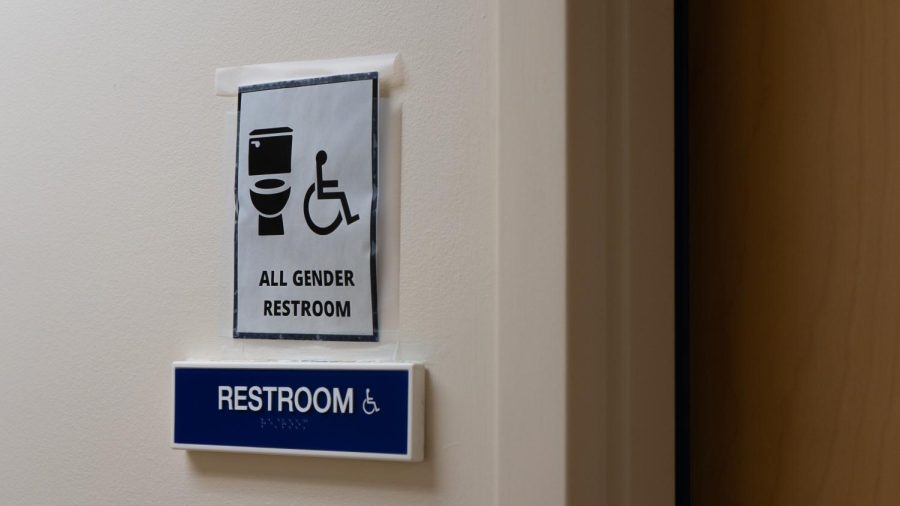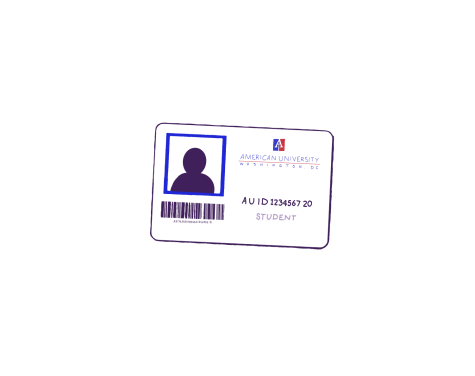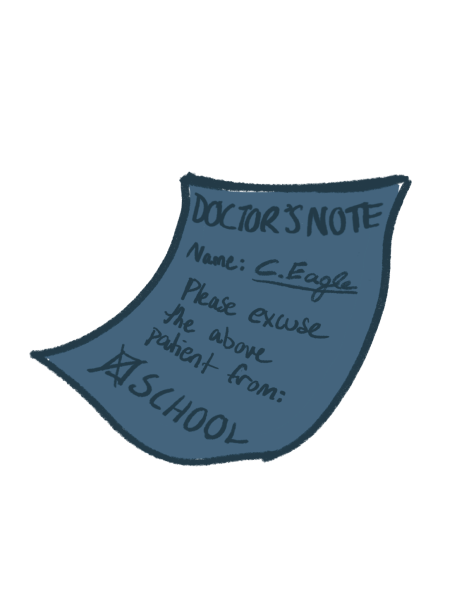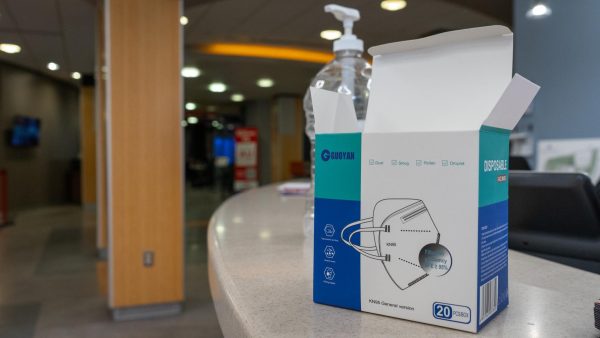Restrooms restructured
New policy changes present challenges for gender-nonconforming students.
Sophomore Cameron Eller, the trans and nonbinary coordinator for the LGBTQ+ student advocacy and programming group, AU Pride, toured the university as a prospective student before the 2021-2022 academic year. Eller said he saw various resources available to LGBTQ+ students in the Mary Graydon Center.
“I went into MGC on the second floor and they had two all-gender restrooms that were multi-stall,” Eller said. “There was a huge sign in the middle that was talking about the importance of all-gender restrooms.”
Eller, a transmasculine person, said he feels uncomfortable using gendered restrooms. The number of restrooms accommodating students like Eller, who don’t always feel comfortable in gendered spaces, decreased this semester.
The university announced its decision to eliminate 14 multi-stall gender-neutral restrooms in an email on Aug. 15. It attributed the change to D.C. Building Code requirements, which mandate a certain amount of gendered restrooms, and privacy concerns.
The university also formed a working group of students, staff and faculty to be a resource while 10 new single-stall gender-neutral restrooms are planned and built across campus. The university plans to complete construction in July 2023.
Gendered restrooms replaced gender-neutral ones at the beginning of the fall semester. The university also removed the sign in MGC explaining the importance of gender-neutral restrooms.
“I could still see the screw holes from where that first sign used to be,” Eller said. “And that was gut-wrenching.”
BestColleges.com ranks American University as the district’s top school for LGBTQ+ students. The website made this determination because of the Trans Resource Guide – which includes guides to housing, health and student organizations considering LGBTQ+-specific issues – and the various LGBTQ+-based community events.
The university’s LGBTQ College Checklist asks prospective students to compare the university’s gender identity acceptance policies with other colleges. Most boxes under the university’s column are pre-checked and discuss topics similar to those included in the Trans Resource Guide.
“I know that one of the things that was really important to me when I was choosing a school was how inclusive they were towards trans students,” Eller said.
Accessibility to gender-neutral restrooms is one of the considerations for the BestColleges.com ranking. While there are still gender-neutral restrooms, there are fewer due to the change.
The university cited privacy concerns as one of the main reasons for changing the genders of the restrooms.
“Our review concluded that our restrooms do not currently provide a consistent level of privacy,” the university said in its initial email.
Eller said he asked university representatives for details on the review.
“The response I got was, obviously, a single-stall restroom is more private than a multi-stall restroom,” Eller said. “And I was like, that doesn’t make any sense.”
The university said it plans for any new and current gender-neutral restrooms to be single-stall.
The university also said that following DC Building Code is a priority. According to the 2017 version, educational facilities must have one restroom per 50 male students and one for every 50 female students. There is no requirement for multi-stall gender-neutral restrooms.
During a town hall on Nov. 3, arranged by AU Pride and attended by CFO Bronté Burleigh-Jones, philosophy professor Perry Zurn gave a presentation on gender-neutral restrooms in the district. Zurn is writing a book on transgender inclusion in universities and was recently made co-lead of the university’s working group on gender-neutral restrooms after having asked to join the working group earlier this year, with Burleigh-Jones.
Professor Zurn’s presentation included a revelation he said his wife had while taking care of their 18-month-old child and searching the internet.
“The next morning, she told me the D.C. plumbing code is built on the international plumbing code,” Zurn said after the meeting.
The 2021 International Building Code includes exceptions to the gendered requirements.
“Where multiple-user facilities are designed to serve all genders, the minimum fixture count shall be calculated 100 percent, based on total occupant load,” according to the code.
Officials in the district are likely to include a similar amendment in an updated building code which is published every two to four years, Zurn said.
“It takes a long time to put new plumbing codes through all the hoops in order to get them to essentially be published,” Zurn said. “DC is fine and happy to amend plans to have this. That’s great, but I got more like a six months to two years [time frame] for when it actually hits.”
Institutions can also apply for a code modification that would allow the university to follow the international code instead of the DC Code, Zurn later said in an email to AWOL. The university would have been able to do this in the summer.
According to Elizabeth Deal, the assistant vice president for Community and Internal Communications, this information does not mean the university will change its policy.
“It is possible that changes will be made to D.C. Code regarding gender-neutral restrooms, though it is still unclear when this could take place and no changes are guaranteed,” Deal said. “The working group will evaluate what a potential change in D.C. Code could mean for our construction plans and if any changes are warranted.”
The university will continue to have only multi-stall gendered restrooms and non-gendered single-stall restrooms.
According to a spreadsheet provided by Deal, the university keeps track of whether buildings comply with the current district code.
The spreadsheet lists eight buildings where new single-stall restrooms will be built and compares the number of required toilets to the number of toilets present.
Of the eight buildings listed, the university has 13 toilets that exceed the requirements, and the Center for Childhood Development is missing a male restroom. Deal explained that the excess toilets were not interchangeable.
“In those instances, significant construction costs and the inconvenience of taking restrooms off-line would be incurred to reduce the overall number of fixtures to the minimum compliance requirement,” Deal said.
The district’s Safe Bathrooms initiative requires all public and privately owned single-stall restrooms to be gender-neutral.
Single-stall accessible restrooms on campus, following the Americans with Disabilities Act (ADA) of 1990, are already gender-neutral as required by the initiative.
Isha Devarasetty, the diversity and accessibility coordinator for AU Pride, said that only having ADA-accessible restrooms available to gender-nonconforming students may create issues.
“This decision forces gender-nonconforming students and disabled students to compete for the limited amount of bathrooms that they can use,” Devarasetty said.
The 10 new single-stall restrooms the university plans to add will be gender-neutral and ADA-accessible.
On campus, there are currently 125 single-stall, all-gender restrooms, according to Deal in an email. Of those restrooms, 66 are “All Gender Accessible Restrooms,” while the rest are “All Gender Restrooms.”
The all-gender accessible restrooms are located in places like the Don Myers Technology and Innovation Building, the lower floors of residence halls, the Mary Graydon Center, the School of International Service and the McKinley Building.
All-gender restrooms are located in places like Bender Library, the Butler Pavilion, the East Quad Building and Kerwin Hall.
In an Instagram post published on Sept. 13, AU Pride said they were in conversation with university administration and the Center for Diversity and Inclusion (CDI) about the new policy. The working group on gender-neutral restrooms includes representatives from AU Pride, CDI, university administration and staff members.
“[The] goal is to support our transgender, nonbinary and gender-nonconforming student members of the community during this period of time and to serve as a resource during the planning and design phase of the new restrooms,” Deal said.
A gender-neutral restroom can be used by anyone of any gender identity. However, it is often gender-nonconforming students that feel uncomfortable in public restrooms.
About 60% of transgender and nonbinary people reported avoiding public restrooms, according to the U.S. Transgender Survey in 2015 conducted by the National Center for Transgender Equality. A new survey for 2022 opened on Oct. 19.
It is vital for transgender and nonbinary people to have access to a gender-neutral restroom option, AU Pride said in their post.
“This is an issue that affects everyone,” AU Pride said. “Our trans, gender-nonconforming, and disabled peers most of all.”
AU Pride said they plan to continue working with the university through working groups and communicating with students.
The current single-stall restrooms have had mechanical issues. The restroom door lock on the second floor of Kerwin Hall has been broken since Oct. 15. Many other functional restrooms also require swipe access.
Sophomore Skylar Bluestein requested swipe access to a gender-neutral restroom last year in Anderson Hall. After making multiple requests, they received access in March, Bluestein said.
“I went with Constitution for living this year because I’m not dealing with this bathroom nonsense again,” Bluestein said.
Last year, Bluestein lived in a traditional freshman dorm on the fourth floor of Anderson Hall. The dorms don’t have gender-neutral restrooms on each floor, according to the university’s list of gender-neutral restrooms. Kai Tomlin, a program associate on Bluestein’s floor last year, said he raised the issue of changing the gendered restrooms to gender-neutral at floor meetings.
“I wanted to make sure that everyone felt comfortable in their home,” Tomlin said. “The bathrooms in our houses are gender-neutral, you don’t need to identify in a binary to go to the bathroom there.”
The conversation ended without a resolution, Tomlin said.
“The topic didn’t get the conversation it deserved,” Bluestein said. “It just felt like it was cut off.”
The university’s plan includes gender-neutral restrooms for the first floor of every residence hall.
Only having single-stall gender-neutral restrooms is a “cop out,” Tomlin said.
“When we can approach a gender-neutral restroom that has six stalls in the same way we would approach a gender-neutral restroom that has one stall in it, then we’ve actually created a gender-neutral space,” Tomlin said.
Tomlin said they plan to continue having conversations with other students and advocating for gender-neutral restrooms.
Eller said he believes the university is unlikely to revert to having the multi-stall gender-neutral restrooms, like the ones on the second floor of MGC when he toured AU, anytime soon.
“I think that if there’s going to be a change, it’s because the students make there be a change,” Eller said.
This article is from AWOL’s 31st print edition.
Neal Franklin is a sophomore studying foreign language and communication media.
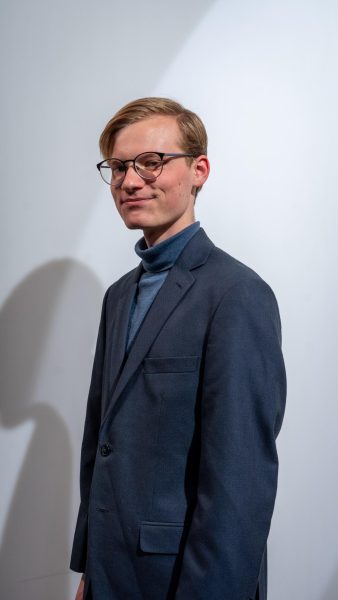
Neal Franklin (he/him) is a senior studying Foreign Language and Communication Media. He enjoys singing in the AU chorus, hiking and playing board games.

Maegan Seaman (She/Her) is a senior pursuing a broadcast journalism major and political science minor. She loves hiking and kayaking, photography, and...


